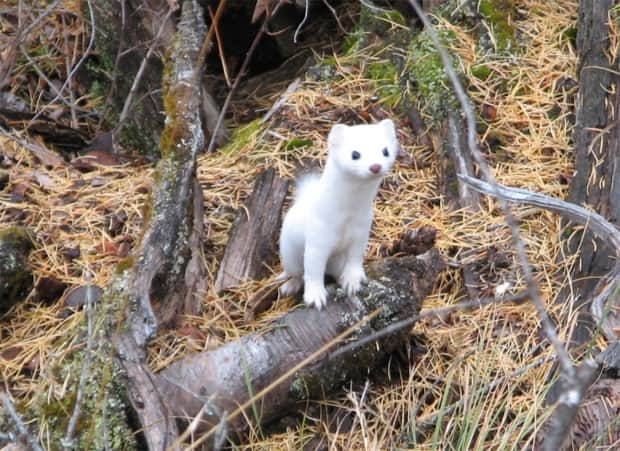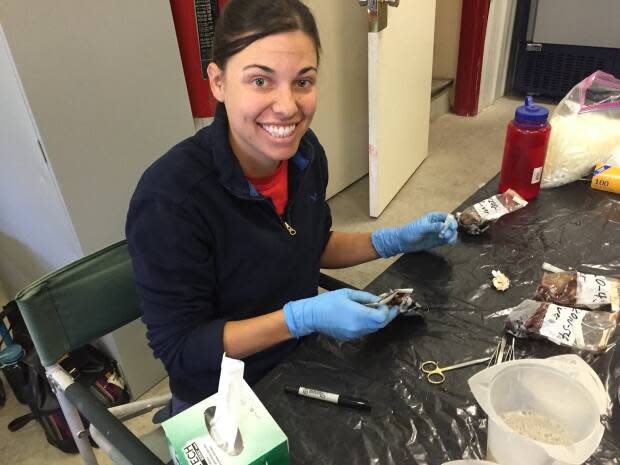Scientists discover hybrid ermine species isolated in Haida Gwaii for 300,000 years

After more than 300,000 years of being stuck on an archipelago off B.C's West Coast, a weasel-like creature has a new designation, according to a scientist from the University of Kansas. The Haida ermine is now one of three distinct ermines that can be found in only two places in the world.
The mammal was first thought to be unique in 2013 but after examining its DNA and skull, scientists discovered that the animal is so vastly different from ermines found in other parts of the world, it is now considered to be its own species.
"We used whole genome DNA and morphology ... to figure out that there are three species and not one," University of Kansas evolution biologist Jocelyn Colella said, "and one of those species [is] only found in Haida Gwaii and the Prince of Wales in Southeast Alaska."
She said the Haida ermine not only looks different with its elongated skull, but the mammal's DNA is also a combination of ermines found in both North America and throughout Eurasia.

"It looks like it was the result of a hybridization or interbreeding event between those two groups that occurred about 375,000 years ago and since then it's probably been stuck on an island," Colella said on CBC's Daybreak North.
A rare occurrence
Colella said hybridization occurs more frequently in the plant world and there isn't much evidence in the animal world because it's not only rare but also "exceptionally unusual."
"Mammals are constrained because we have pairs of chromosomes, so you rarely see the chromosomes of different mammals work well together," Colella explained, "so it makes sense that this hybridization event would have been a long time in the past when these groups were more closely related."
Colella said the discovery of the Haida ermine has led scientists who studied the mammal to believe that there could be other animals unique to archipelagoes like Haida Gwaii and the Prince of Wales Island.

"We think the reason Haida Gwaii has such unique flora and fauna is because ... there were these little pockets of ice-free areas where plants and animals could have lived during the ice ages but it would have been separated from anything on the main land," Colella said.
She said this new find is indication that scientists should be examining other areas for similar occurrences of hybridization before it's too late.
"It's amazing to see that we have no idea what's out there until we look," Colella said. "I think our ability to use DNA to ask questions about biodiversity is uncovering a different story than we previously thought."

